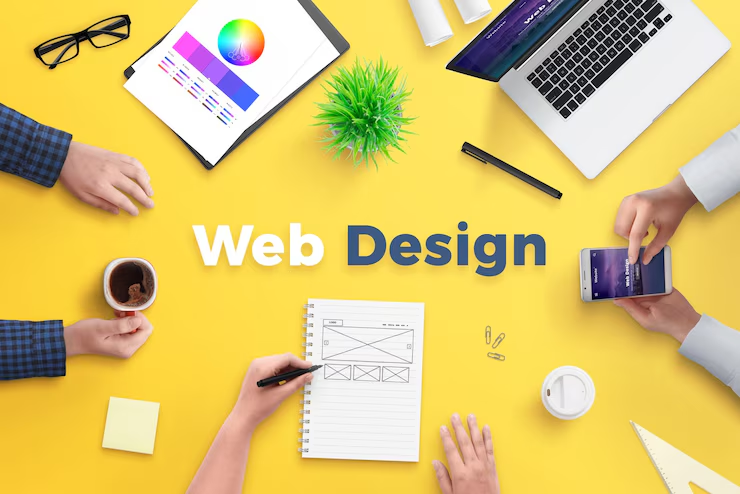Dynamic Web Designing Defined
The dynamic webpage is a type of homepage that inherently changes based on data and functions around user interactions while also meeting their preferences. Typically running from the high-end server-side services such as PHP, ASP.NET, Java, or Python, a dynamic website directly communicates images, files, and HTML flows through a database other than CSS. For example, e-commerce sites showing personalized product recommendations and news portals showing the latest updates come under dynamic web design.
For example, e-commerce sites showing personalized product recommendations and news portals showing the latest updates come under dynamic web design.
Static versus Dynamic Websites: An Overview
| Feature | Static Website | Dynamic Website |
|---|---|---|
| Content | Fixed, hard-coded | Real-time, data-driven |
| Interactivity | Minimal | High |
| Flexibility | Limited | Highly customizable |
| Maintenance | Difficult for large-scale content | Easier with CMS |
| Examples | Personal blogs, brochures | E-commerce, portals |
Importance of Dynamic Web Designing in 2025
Dynamic websites are the lifeblood of speed, intelligence, and responsiveness that users expect. It can support high-functioning platforms, from user login systems to dashboards and on-the-go analytics. Moreover, dynamic website development ensures scalability, which further qualifies it as a choice for today’s start-ups along with small and medium enterprises and their large counterparts.Dynamic Key Features of Websites
- From a development point of view, these are some of the key characteristic features of a quote-worthy dynamic website.
- CMS Integration: Use of Content Management Systems like WordPress, Joomla, or Drupal for easy updates.
- Database Connectivity: Keeps storing, retrieving, and managing data.
- User Interactivity: Functionality for login forms, comment sections, search functions, and product filters.
- Personalization: Different content is displayed based on user data and behavior.
- Real-Time Updates: Content is updated without a full page refresh (AJAX-based).
Technology platform for Dynamic Web Designing
Dynamic web applications are standing on the shoulders of front-end and back-end technologies:- Front-End: 9Tech 5, 5Cesses, 7Script, React, Angular, Vue.js
- Backend: PHP, Node.js, Python, ASP.NET, Ruby on Rails
- Data: MySQL, PostgreSQL, MongoDB, Firebasee
- CMS: WordPress, Drupal, Joomla
- Server: Apache, Nginx
Benefits of Dynamic Web Designing for Businesses
Today, the businesses need to cope with the ever-changing face of digital. It is not just going online; it is also becoming interactive, engaging, and scalable. Dynamic web designing is the key to this transformation. By including such features as real-time content updating and personalized user experiences, dynamic web design offers sophisticated alternatives to the static intuitiveness and functionality. The most important benefits that this dynamic web design brings to modern business include:1. Enhanced User Experience
It doesn't need to be said that one of the biggest advantages of dynamic websites is that they are responsive in nature. The content made available by static pages remains constant for every visitor to the website. On the contrary, dynamic pages for constructing content from user preferences, location, and browsing history are such that the information it displays is customized. This level of personalization provides an easier, more gripping user experience that is prone to stickier with longer staying periods. The more that users feel that they are content-related, the higher the odds that they will interact and convert.2. Easy Content Management
Almost all dynamic sites come with an integrated CMS like Joomla, WordPress, or Drupal. Those would, in essence, allow business people in updating or running their sites without needing hands-on coding knowledge. Everything, from publishing blog posts to changing product descriptions or updating images, would be as easy as clockwork. Thus, the marketing and other non-technical teams can keep the website fresh and updated in real time without bombarding the developer with requests.3. Superior SEO Performance
In terms of SEO, there are many advantages gained with this dynamic web design. With the features it can offer, this website allows clean, smooth, SEO-friendly URLs and dynamic generation of metadata. As a result come structured data or schema markups, all these contribute to crawlers, indexing, and understanding of your website by search engines, whether yours is improved in visibility or ranking in Google and Bing or other platforms. Also, faster and more user friendly contribute to lower bounce rates-another factor regarded positively by search engines.4. Scalable and Flexible
One of the main points of dynamic web design is scalability. Your business continues to develop, and so can your website without a complete redesign. Add new features to your website; integrate more tools; or increase the number of content classes, all without any real sacrifice to ease of use. From adding a new CRM to creating a customer portal or providing your clients with e-commerce functions, everything can be done through the dynamic site. That scalability guarantees that your digital platform will evolve along with the other aspects of your business objectives popular.5. Increased Engagement and Conversions
Examples of interactive features include but are not limited to: chatbots, animated forms, highly animated banners, and personalized call-to actions, all of which draw the visitor's attention yet induce them to engage with the site. These function to reduce pains in the customer journey and encourage went through their conversion points naturally. Be it lead generation, online sales, or content subscription, a dynamic design architecture is set to increase the chances of achieving higher engagement metrics and conversion rates.Dynamic Web Designing Process
Creating a dynamic website requires a multi-step process, strategy, creativity, and technical expertise. Every step is thereby intended to make the product not just aesthetically pleasing but also technically superior and secure as well as scalable. Here is a complete breakdown of how the process of dynamic web designing goes: Dynamic website development exists in several stages.1. Requirement Analysis
The process begins with an in-depth understanding of what the client hopes to achieve for its business, what audience it is targeting, and what requirements it has. This analysis encompasses what type of content to work with, what features to have, what behavior is expected from users, and what integrations need to be included. The reason behind such goal is to gather information to make it possible to create a blueprint that would harmonize design and development with strategic business outcomes.2. Planning & Wireframing
Now that an outline has been created for the design itself, the project has moved into structural planning. Designers and information architects create wireframes-simple layout diagrams outlining the architecture, navigational flow, and content placement for the site. That stage helps everyone visualize how users will move through the site and at the same time ensures logical structure and usability before any visual design or development work begins.3. The Design Phase
Once wireframes have been established as approved, the creative team will commence work on UI (User Interface) and UX (User Experience) design. This would involve creating layouts which are visually appealing, color palettes that are in line with the brand and designing elements that could not only serve functional purposes but aesthetic ones as well. An emphasis is placed on responsive designs that cultivate seamless interaction, be it desktop, tablet, or mobile.4. Development Phase
The actual coding begins after designs are finalized. The development phase includes both the front-end and the back-end stock. The front-end coding is completed using HTML, CSS, and JavaScript to realize the designs, while the back-end refers to those server-side scripting languages such as PHP, Python, or Node.js, based on the platform. Database integration is also taken care of here to enable content management, user accounts, dynamic forms, and much more.5. Testing & Debugging
No dynamic website is without thorough testing. In this phase, the site undergoes several types of tests - from functionality tests through performance tests to cross-browser tests and mobile responsiveness checks. Developers also debug any issues related to navigation, loading speed, or feature malfunctions in order to ensure a flawless end-user experience. The site is also subject to security checks and accessibility audits during this phase.6. Launch & Maintenance
Dynamic Web Designing Applications
Dynamic websites can be suited for:- E-commerce sites
- News portals
- Education portals
- Business dashboards
- Social networks
- Real estate listing sites
- Job portals
Why Dynamic Web Designing Instead of Static Design?
- Designing dynamic websites can be enjoyed with flexibility and future eyes set.
- They pose easy implementations for interaction settings such as user registration, form submissions, and real-time content updates.
- Dynamic sites are an SEO token, able to target long-tail keywords and best suit the experience.
Dynamic Website Design Best Practices
Designing a successful dynamic website is more than just the addition of interactive features and a content management system; it is also observation of the industry's best practices such that the site is at its best in terms of performance, usability, and visibility. Dynamic web design best practices will aid in increasing overall user engagement, search engine optimization rankings, and scalability over time-; whether you're building a new website or redesigning an existing one.1: Mobile-first design
Today, more than one-half of all the traffic on the Internet comes from mobile device users, making mobile-first designing extremely important but also utterly essential. The site should be designed from end to end with mobile devices in mind so that every part from interface down to layout and functionality works seamlessly with smaller screens. Responsive web design would offer the flexibility that all devices would be able to adapt to, including smartphones, tablets, and desktops-all delivering a seamless and user-friendly experience across each one. Buttons, menus, and content blocks will have to be manipulable by touch. Besides, mobile optimization will play an important role for Google to decide your rank in its search results, meaning it's a key consideration in your dynamic web designs.2: Use SEO-Friendly URLs
Most dynamic sites depend on query strings or database parameters; the consequence of this practice is that URLs become long and illegible. Configuring SEO URLs clean and concise and keyword-rich is among the best practices. Instead of a dynamic example such as example.com/page?id=123, it is better to have example.com/product-name. They are easier to understand and share for users but also benefit from an increased efficiency in crawling and indexing by search engines. A good URL structure should represent the hierarchy of the site and also have related keywords to be located on the search engines without losing its nature.3: Make sure to Optimize Loading Speed
Page load speed is vital for user experience and search engine optimization. A slow-loading website can make a user very unhappy and very likely to drop out before a visit is complete; this is bad news for search engine ranking results. Dynamic websites tend, in general, to have more overhead than static ones. Employ performance optimization techniques such as browser caching, content delivery networks (CDNs), and lazy loading for images and scripts. Compression of images, minifying CSS/JS files, and reducing unnecessary HTTP requests are part of this optimization. The above steps ensure that your site loads quickly, holds more users, and enhances overall efficiency, especially for mobile users and visitors with slower connections.4: Integrate Analytics
The most important thing is to understand how users interact with your site, which will lead you to know how it should be improved. Integrate it into a powerful tool like Google Analytics, Hotjar, or Microsoft Clarity to show the behavior of users on your site concerning traffic sources, conversion funnels, and page performance over time. That way, you fine-tune your content and measure the performance of different sections of your site to check and optimize its effectiveness in relation to dynamic content. One might think the heatmaps and session recording enhances the information by adding insight into user intent which would further refine user interface and marketing strategies. Remember to also properly embed tracking codes along with goal tracking per your business objectives.5: Protect Your Website
Dynamic websites that receive users' data, process transactions, or depend on third-party APIs should never be thought of in terms of security as an afterthought. Start securing your website with HTTPS. This encrypts the data from transferring and also increases the trust and rank in SEO. Strong firewalls constantly make periodic checks for their security risk, obsolete your CMS, plugin, and server environments every time. Security measures should also be included such as CAPTCHA, 2-factor authentication, and optimal backup plans for the site against unauthorized access, malware, and lost data. It may also be necessary to have a web application firewall (WAF) for detection and prevention of real-time threats and attacks.SEO Optimization for Dynamic Websites
Dynamic content could sometimes pose difficulties coincident to search engines; however, these possibilities are minimized if the following best practices are observed:- Dynamic sitemap generation.
- Use of structured data (schema markup).
- Ensure that JavaScript is SEO-friendly.
- Navigation must be crawlable.
Cost of Dynamic Web Designing
Cost of designing dynamic websites may tend to vary depending on:
- Total number of pages
- Complexity in features
- CMS or custom development
- UI/UX design
- Hosting and domain charges
Following is an approximate price list for India:
- Basic dynamic website – ₹20,000- ₹50,000
- E-commerce dynamic site – ₹60,000- ₹2,00,000+
- Enterprise-level dynamic platforms – ₹3,00,000+
top 5 companies offering Dynamic Web Designing services,
| Rank | Company | Headquarters | Strengths |
|---|---|---|---|
| 1 | Infimintus Technologies | Indore, India | Affordable, innovative, custom solutions, client-focused |
| 2 | TCS | Mumbai, India | Enterprise-grade solutions, strong security |
| 3 | Infosys | Bangalore, India | Data-driven, scalable, intelligent systems |
| 4 | Accenture | Dublin, Ireland | Design thinking, customer-centric, tech-integrated |
| 5 | Tech Mahindra | Pune, India | Agile, modern architecture, industry-specific solutions |
For Outstanding Dynamic Web Designing- Infimintus Technologies
Infimintus Technologies there is a name above any and all of web developing, customized and delivered dynamic web solution for very high performance, maximum scalability, and brilliant design. With more than a decade of experience working with technologies such as React, Node.js, Angular, and PHP, we strive to deliver user-centric web platforms tailored to your industry needs.Here are our Dynamic Web Designing Services:
- Custom Website Development
- CMS-based Dynamic Sites
- E-commerce Website Development
- API Integration & Automation
- Responsive UI/UX Design
- Maintenance & Support
Which Industries We Serve
- Retail & E-commerce
- Education & E-learning
- Healthcare & Pharma
- Real Estate
- Finance & Banking
- Travel & Hospitality
- Media & Entertainment
Future of Dynamic Web Designing
Rapidly evolving now with the development in AI, voice search, and web 3.0, dynamic websites are likely to undergo some of the more exciting transformations in the future. Emerging trends are listed as follows:- Personalization Based on AI
- Progressive Web Apps (PWA)
- Chatbots and Voice UIs
- Headless CMS Integration
- Serverless Architecture
Conclusion
In such evolving digital domains of today, businesses require websites that look fantastic and are performing well. Dynamic web designing lies in that bridging, showing flexibility, multi-functional ability, and customer-oriented design. Whether you are at the stage of starting a new business or revamping your old one, you are well prepared for growth in the future when you invest in a dynamic site. If you're looking for professional, scalable, and SEO-optimized dynamic website designing services, reach out to InfimintusTech. Let's build something unique together.FAQ's
1. What is dynamic web designing?
Dynamic web design is the creation of web sites that change in appearance and function according to user interaction, user preference, or user behavior. The server-side technology, together with a database, facilitates the creation of a user-oriented and interactive experience.
2. How is a dynamic website different from a static website?
Static and dynamic website-interactive compare in content delivery irrespective of user behavior. A static website delivers the same content to everybody, while the latter receives real-time updates based on user input, changes in the database, or system-wide settings.
3. What are the benefits of dynamic web designing?
Dynamic web designing promotes higher interaction, simplified content management, advanced scalability, personalized experiences, as well as better SEO results.
4. Is dynamic website development good for SEO?
Dynamic websites can be made SEO-friendly simply with a bit of URL structuring, fast loading time, responsive design, and structured data in place. And with CMSs, on-page SEO is further simplified.
5. What technologies are used in dynamic web designing?
User dynamically designs websites that involve PHP, Node.js, Python, ASP.NET, MySQL, React, Angular, and WordPress web applications.arily
6. Can I update my dynamic website without coding knowledge?
How important it is to make such changes depends on the CMS software under which the dynamic website is created. Yes, it means if the dynamic website is developed under popular content management systems like Joomla or WordPress, then changing some image or text could be useful. On the other hand, if it is anything other than that CMS software, any change to the text and image would need to be done with some technical knowledge.
7. How much does a dynamic website cost in India?
In India, the cost of dynamic websites usually falls between ₹20,000 to ₹2,000,000 or more as per the varying features, number of pages, and complexity of design.
Read Our Another Article's:
Website Redesigning Services: Give Your Website a Fresh, High-Performing Look













